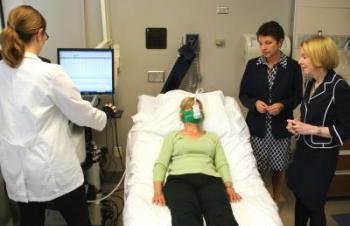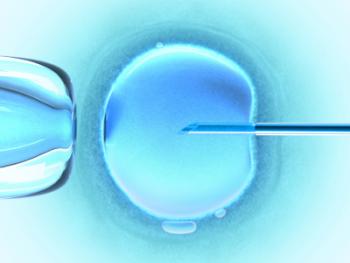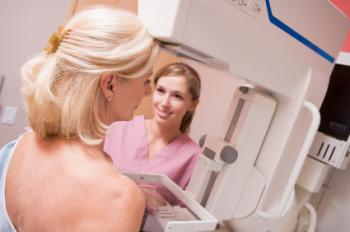 |
| Dr. Enrique Jacome |
A new study in women suggests that experiencing one or more stressful events the day before eating a single high-fat meal can slow the body's metabolism, potentially contributing to weight gain.
Researchers questioned study participants about the previous day's stressors before giving them a meal consisting of 930 calories and 60 grams of fat. The scientists then measured their metabolic rate - how long it took the women to burn calories and fat - and took measures of blood sugar, triglycerides, insulin and the stress hormone cortisol.
The stressed women also had higher levels of insulin, which contributes to the storage of fat, and less fat oxidation - the conversion of large fat molecules into smaller molecules that can be used as fuel. Fat that is not burned is stored.

"This means that, over time, stressors could lead to weight gain," said Jan Kiecolt-Glaser, professor of psychiatry and psychology at The Ohio State University and lead author of the study. "We know from other data that we're more likely to eat the wrong foods when we're stressed, and our data say that when we eat the wrong foods, weight gain becomes more likely because we are burning fewer calories."
Previous research also has shown that people who experience stress and other mood disruptions are at higher risk of becoming overweight or obese. This study, the researchers say, appears to illustrate at least one mechanism behind that connection.
The research is published in the journal Biological Psychiatry.
The study was conducted in 58 women, average age 53, and included two admissions to Ohio State's Clinical Research Center for daylong analyses. To regulate their food intake for 24 hours before eating the high-fat meal, researchers supplied the participants with three standardized meals on the previous day and instructed them to fast for 12 hours before reporting for their study visit.
On the day of admission, the participants completed several questionnaires to assess their depressive symptoms and physical activity and were interviewed about stressful events on the prior day. Thirty-one women reported at least one prior day stressor on one visit and 21 reported stressors at both visits. Six women reported no stressors.
Most of the reported stressors were interpersonal in nature: arguments with co-workers or spouses, disagreements with friends, trouble with children or work-related pressures.
The research meal consisted of eggs, turkey sausage, biscuits and gravy - roughly equivalent in calories and fat to a loaded two-patty hamburger and French fries at a fast-food restaurant. Participants were required to eat the entire meal within 20 minutes.
"This is not an extraordinary meal compared to what many of us would grab when we're in a hurry and out getting some food," said Kiecolt-Glaser, also director of the Institute for Behavioral Medicine at Ohio State.
The control for comparison in this randomized trial was that one meal contained saturated fat and another was high in a different kind of fat: sunflower oil containing monounsaturated fat, which is associated with a variety of health benefits.
"We suspected that the saturated fat would have a worse impact on metabolism in women, but in our findings, both high-fat meals consistently showed the same results in terms of how stressors could affect their energy expenditure," said Martha Belury, professor of human nutrition at Ohio State and a co-author of the study.
Before the meal, participants rested for 30 minutes and their energy expenditure - or calories burned by converting food to energy - was tested during that time. After they ate their meal, their metabolic rate was tested for 20 minutes of every hour for the next seven hours. Researchers obtained this data by using equipment that measured inhaled and exhaled airflow of oxygen and carbon dioxide.
"By measuring the gas exchange, we can determine their metabolic rate: how much energy their body needs during the time being measured," Belury said. "The participants burned fewer calories over the seven hours after the meal when they had a stressor in their life the day before the meal."
Researchers also took multiple blood samples "so we could follow throughout the day what was happening metabolically after eating the high-fat meal," Kiecolt-Glaser said.
The stressors' effects of increasing insulin had a time element: Insulin spiked soon after the high-fat meal was consumed and then decreased to roughly match insulin levels in nonstressed women after another 90 minutes.
A history of depression alone did not affect metabolic rate, but depression combined with previous stressors led to a steeper immediate rise in triglycerides after the meal. Triglycerides are a form of fat in the blood, and high levels are considered a risk for cardiovascular disease.
"With depression, we found there was an additional layer. In women who had stress the day before and a history of depression, triglycerides after the meal peaked the highest," Kiecolt-Glaser said. "The double whammy of past depression as well as daily stressors was a really bad combination."
The researchers are reluctant to extend these findings to men because men tend to have more muscle than women, which would affect their metabolic rate, Belury said.
But the findings do offer one more motivation to keep healthful foods nearby.
"We know we can't always avoid stressors in our life, but one thing we can do to prepare for that is to have healthy food choices in our refrigerators and cabinets so that when those stressors come up, we can reach for something healthy rather than going to a very convenient but high-fat choice," Belury said.




